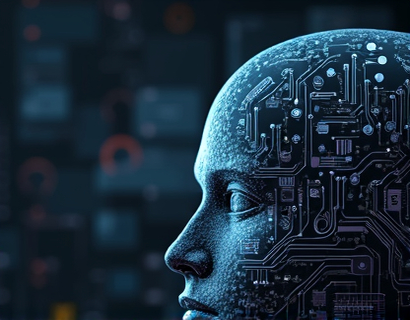Unlocking the Potential of AI-Driven Compiler Insights for Educational Excellence
In the rapidly evolving landscape of computer science education, the integration of advanced technologies such as AI-driven compiler insights stands out as a transformative tool. This article delves into how an advanced AI chat platform can offer specialized knowledge and industry trends, focusing on safety and educational value for students and educators. By leveraging AI technology, we can create an engaging and accurate learning environment that caters to the diverse needs of learners.
Understanding Compiler Technology Through AI
Compiler technology is a fundamental aspect of software development, serving as the bridge between high-level programming languages and machine code. For students and educators, grasping the intricacies of compilers can be challenging due to the complex nature of the subject. An AI-driven platform can demystify these concepts by providing interactive and personalized insights. This approach not only enhances understanding but also fosters a deeper interest in the field.
The AI chat platform acts as a knowledgeable guide, offering explanations tailored to the user's level of expertise. For beginners, the platform can start with basic concepts such as lexical analysis, syntax analysis, and semantic analysis. As users progress, the platform can introduce more advanced topics like optimization techniques, code generation, and runtime environments. This gradual approach ensures that learners are not overwhelmed and can build their knowledge systematically.
Specialized Knowledge and Industry Trends
One of the key advantages of an AI-driven compiler insights platform is its ability to provide up-to-date information on industry trends. The field of compiler design is constantly evolving, with new research and innovations emerging regularly. An AI system can aggregate data from various sources, including academic papers, industry reports, and expert opinions, to offer a comprehensive view of current trends.
For educators, this means access to the latest teaching materials and methodologies. They can stay informed about new tools and techniques that can enhance their curriculum. For students, staying updated with industry trends can inspire them to explore cutting-edge projects and applications. The platform can highlight trends such as the rise of just-in-time compilation, advancements in parallel and distributed computing, and the integration of machine learning in compiler optimization.
Ensuring Safety and Educational Value
When it comes to educational resources, especially for young learners, safety and accuracy are paramount. An AI-driven platform can incorporate robust content verification processes to ensure that all information provided is accurate and reliable. This involves cross-referencing data from trusted sources, peer-reviewed publications, and expert contributions. By maintaining high standards of accuracy, the platform builds trust with its users and provides a safe learning environment.
For child-friendly use, the platform can offer a simplified version of the content, using age-appropriate language and visual aids. This ensures that even young students can engage with complex topics without feeling intimidated. The AI can adapt the complexity of the explanations based on the user's feedback and performance, making the learning experience both safe and effective.
Interactive Learning with AI Chat Interface
The AI chat interface is a cornerstone of this platform, providing an interactive and engaging way for users to learn about compiler technology. Unlike traditional textbooks or lectures, an AI chatbot can offer real-time responses to user queries, creating a dynamic learning experience. Users can ask questions, seek clarifications, and explore topics in depth at their own pace.
The chat interface can also facilitate hands-on learning by guiding users through practical examples and coding exercises. For instance, a user might ask the AI to explain how a specific optimization technique works, and the AI can provide a step-by-step breakdown along with code snippets. This interactive approach not only reinforces theoretical knowledge but also helps users develop practical skills.
Personalized Learning Paths
One of the most powerful features of an AI-driven platform is its ability to create personalized learning paths for each user. By analyzing user interactions and performance, the AI can identify areas where a user may need additional support or challenge them with more advanced topics. This personalized approach ensures that each learner progresses at their own speed and in a way that suits their learning style.
For educators, this means they can use the platform to identify common knowledge gaps among their students and tailor their teaching strategies accordingly. The AI can provide insights into which concepts are causing difficulties and suggest targeted resources or activities to address these gaps. This data-driven approach enhances the effectiveness of the educational process.
Community and Collaboration
Learning is often a collaborative endeavor, and an AI-driven compiler insights platform can foster a sense of community among users. The chat interface can include features that allow users to connect with peers, join study groups, and participate in discussions. This community aspect encourages knowledge sharing and collaboration, which are essential skills in the tech industry.
Educators can also leverage these community features to facilitate group projects and peer reviews. The AI can monitor these interactions, providing feedback and ensuring that the discussions remain focused and productive. This collaborative environment not only enhances learning but also helps students develop important social and communication skills.
Accessibility and Inclusivity
To ensure that the benefits of AI-driven compiler insights are accessible to all, the platform must prioritize accessibility and inclusivity. This includes designing the user interface to be user-friendly for individuals with disabilities, providing options for different languages, and ensuring that the content is culturally relevant and sensitive.
For students with learning disabilities, the AI can offer alternative explanations, visual aids, and interactive elements that cater to their specific needs. The platform can also comply with accessibility standards such as WCAG, making it usable for a wide range of users. By being inclusive, the platform broadens its impact and ensures that everyone has the opportunity to learn and grow.
Continuous Improvement and Feedback
The success of an AI-driven platform relies heavily on continuous improvement and user feedback. The AI system can collect data on user interactions, feedback, and performance metrics to refine its algorithms and enhance the learning experience. This iterative process ensures that the platform remains relevant and effective over time.
Educators and students can provide feedback directly through the chat interface, suggesting improvements, reporting issues, or sharing success stories. The AI can analyze this feedback to identify trends and areas for enhancement. By actively involving its users in the improvement process, the platform demonstrates a commitment to quality and user satisfaction.
Conclusion
AI-driven compiler insights represent a significant advancement in computer science education, offering a safe, engaging, and personalized learning experience. By leveraging the power of AI, we can create a platform that not only imparts expert knowledge but also fosters a love for learning and innovation. As we continue to explore the potential of this technology, the future of education looks brighter, with more tools at our disposal to inspire and educate the next generation of tech leaders.










































